Sierra Espuña Malaguide an example of geological heritage
The Cenozoic Malaguide Basin from Sierra Espuña (Internal Betic Zone, S Spain) due to the quality of outcropping, areal representation, and continuity in the sedimentation can be considered a key-basin. In the last 30 years, a large number of studies with very different methodological approaches have been done in the area. Models indicate an evolution from passive margin to wedgetop basin from Late Cretaceous to Early Miocene. Sedimentation changes from limestone platforms with scarce terrigenous inputs, during the Paleocene to Early Oligocene, to the deep basin with huge supplies of turbidite sandstones and conglomerates during the Late Oligocene to Early Miocene. The area now appears structured as an antiformal stack with evidence of synsedimentary tectonics. The Cenozoic tectono-sedimentary basin evolution is related to three phases: (1) flexural tectonics during most of the Paleogene times to create the basin; (2) fault and fold compartmentation of the basin with the creation of structural highs and subsiding areas related to blind-fault-propagation folds, deforming the basin from south to north during Late Oligocene to Early Aquitanian times; (3) thin-skin thrusting tectonics when the basin began to be eroded during the Late Aquitanian-Burdigalian. In recent times some works on the geological heritage of the area have been performed trying to diffuse different geological aspects of the sector to the general public. A review of the studies performed and the revisiting of the area allow proposing different key-outcrops to follow the tectono-sedimentary evolution of the Cenozoic basin from this area. Eight sites of geological interest have been selected (Cretaceous-Cenozoic boundary, Paleocene Mula Fm, Lower Eocene Espuña- Valdelaparra Fms, Middle Eocene Malvariche-Cánovas Fms, Lowermost Oligocene As Fm, Upper Oligocene-Lower Aquitanian Bosque Fm, Upper Oligocene-Aquitanian Río Pliego Fm, Burdigalian El Niño Fm) and an evaluation has been performed to obtain four parameters: the scientific value, the educational and touristic potential, and the degradation risk. The firsts three parameters obtained values above 50 being considered of “high” or “very high” interest (“very high” in most of the cases). The last parameter shows always values below 50 indicating a “moderate” or “low” risk of degradation. The obtained values allow us considering the tectono-sedimentary evolution of this basin worthy of being proposed as a geological heritage.

Field work in the Eocene Prebetic
The good weather in Alicante during the winter season has permitted to do the first field season of our project of the Spanish research agency (Agencia Estatal de Investigación) of the Spanish Science and innovation minister (Ministerio de Ciencia e Innovación) entitle as “EVOLUCION TECTONO-DEPOSICIONAL DE CUENCAS SEDIMENTARIAS CENOZOICAS: CARACTERIZACION 2D-3D Y MEJORA DE PATRONES ESTANDAR” (PID2020-114381GB-I00). See previous post.
The picture shows the members of the team imply in this field try to the Eocene rocks within the provinces of Alicante and Murcia.
Crina Miclaus (Alexandru Ioan Cuza University)
Josep Tosquella (Huelva University)
Manuel Martin-Martin (Alicante University)
Jose Enrique Tent-Manclus (Alicante University)
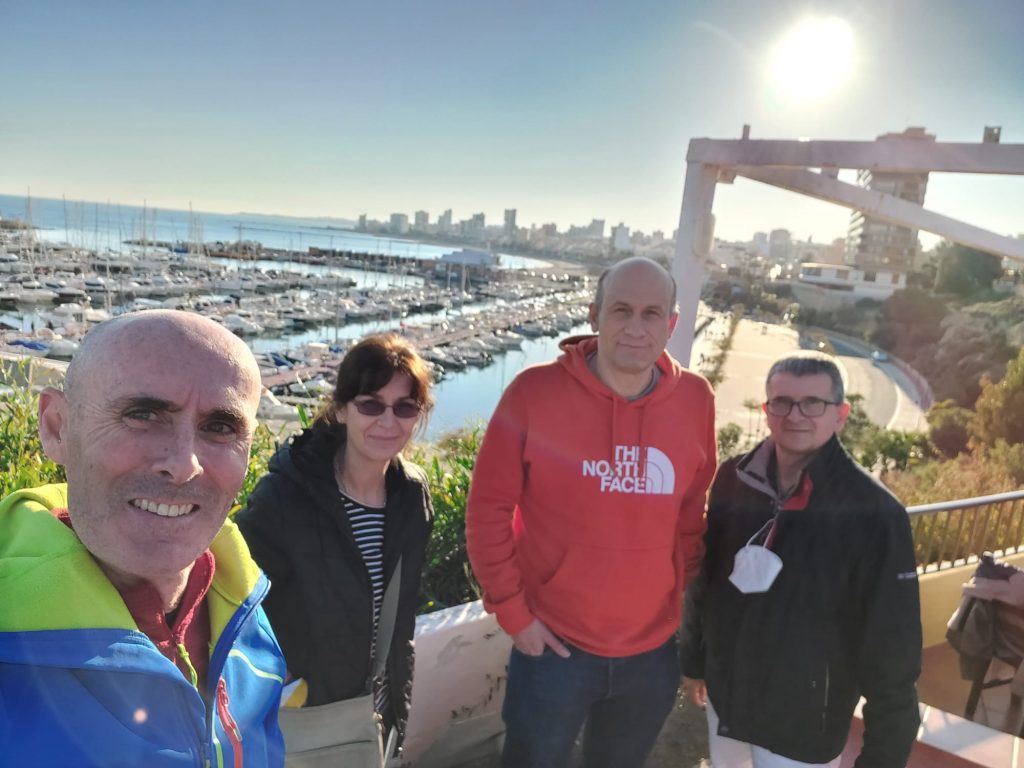
Next picture shows a nummulite-rich limestone in a quarry near Onil, one of the visited sections in our field work.
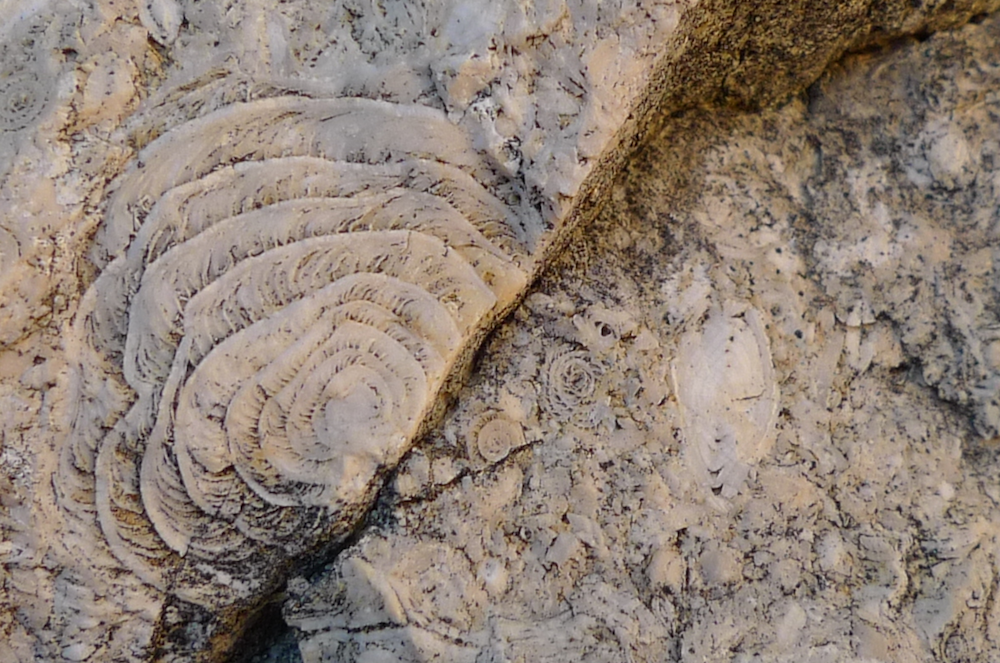
Software for Geological modelling (part I)
Geological modelling is the ability to create computerized representations of subsurface geology. Many times, every once in a while, I have searched internet to find nice-looking geological models, just to find ideas or whatever the workers were doing. I like the ones with many colours (using all-the-rainbow) with a 3d immersive-perspective, nice vertical and horizontal axis lines and a 3d north-arrow. The idea of being true or just being a well-documented cartoon of something real was not important at the first point. For most geologists a nice looking 3d geological model is supposed to be truer than a simple map.
Then the next search is about the new accepted manuscripts of recently published papers in some scholarly journals, academic journals, to see what was new about illustrating works. My filling and also of my staff companions are that nice-looking figures illustrating a geological manuscript permit a better, faster, less time-consuming publish research results. All of us remember some not top-quality (debatable quality) works published because they have awesome figures.
Well, now we known the interest of geological modelling but most of the time what we need just a geoscience art-work.
A geological model can be obtained after doing three phases, that can produce each one a geological 3d illustration, and can be considered a computerized subsurface geological representation.
- The first level is the geological 3D sketch in this level show a simplistic way of showing a complex geology. The software to do so is the kind of a “mudball” modelling software as for instance (sketchup) https://www.sketchup.com/, Blender (https://www.blender.org), or Tinkercad (https://www.tinkercad.com). But taking in an account that we normally like to start with a geological map or an aerial photomosaic (like google Earth). The software must have 2D mapping and mosaic tiles import filters capabilities. As my experience of working with 2D for mapping the best choice is Autocad 3d Map (Autodesk). I can map then, then create surface an made simplistic geological model, what a sketch is.
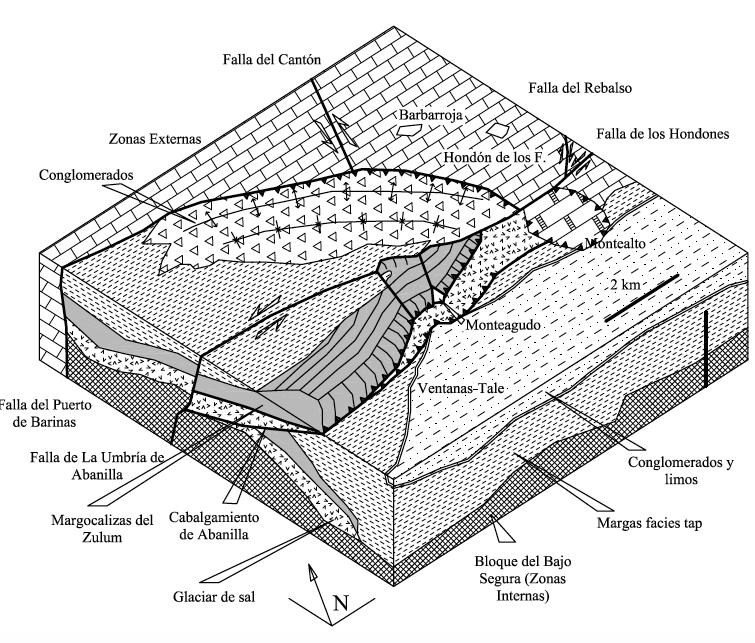
- The second level is the realistic 3d model representation. In this step we like to integrate the relief, using a Digital Elevation Model (DEM), with the aerial photomosaic, and the information below the land surface. For geological model we like a 3d net used as scale to appreciate the rock volumes. Also, we like a software with capabilities of change the vertical factor and to create immersive perspectives. All this can be done also with Autodesk programs, but it takes a lot of time to produce the model because they are designed for computer-lovers than like to spend days in front of the screen. The final result can be the better one, but geologist usually like to check the results in the field, not spending all the time with the computer. This last reason is that I prefer a simpler graphical interface so do a nice-looking illustration from a point of view of an Earth scientist, not a blockbuster movie. Therefore, my choose is the golden software surfer program.
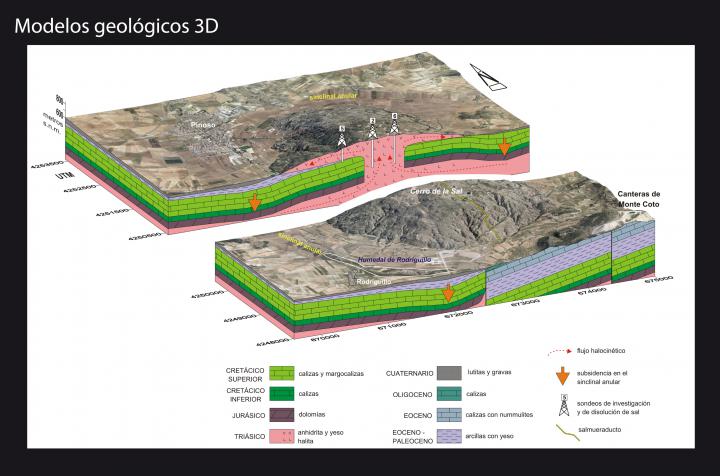
- The third level is using the realistic model to go back and forth in time to see the deformation history and trying to understand the forces and the deformation phases to produce the 3d geometry. This is the goal of the structural geology. To achieve this level most of the time it has to be a simplified the previous model to work with because some information is useless in this level as for instance the aerial photomosaics. For this phase are designed the principal geomodelling software as for instance Petrel, Gocad or MOVE. All mentioned software is oriented to the petroleum industry so it means that are not cheap. In my case the easier to get access has been the MOVE and that’s my choice.

Finally, the example that I most like is the British Geological Survey model of the Assynt culmination Geologica 3D model that you can download here in a 3D pdf file.
http://nora.nerc.ac.uk/id/eprint/504722/1/Assynt_Culmination.pdf
Visiting the Monduver geologic dome II
Students of the third course of Geology of the Alicante University within the subject of Regional Geology: visit Jarafuel triassic section, Montealegre del Castillo triassic section, Sot de Chera Jurassic section and Monduver geologic dome.
The picture shows exposition of the teacher on the Monduver peak.

New project to study sedimentary basins.
The Spanish research agency (Agencia Estatal de Investigación) of the Spanish Science and innovation minister (Ministerio de Ciencia e Innovación) has conceded a new project to study the Cenozoic sedimentary basins entitle as “EVOLUCION TECTONO-DEPOSICIONAL DE CUENCAS SEDIMENTARIAS CENOZOICAS: CARACTERIZACION 2D-3D Y MEJORA DE PATRONES ESTANDAR” (PID2020-114381GB-I00).
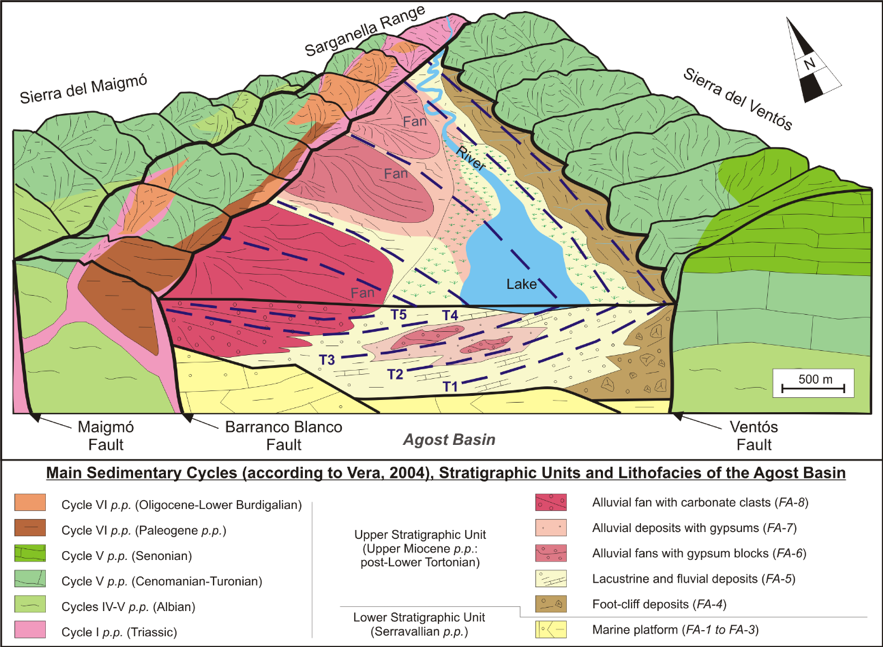
This research project will develop techniques for the analysis of various types of Cenozoic sedimentary basins in a general compressive or convergent framework (associated with strike-slip faults, transported -piggy-back or wedge-top-, and complex foreland systems). The stratigraphic architecture, biostratigraphic control of the different sedimentary bodies, stratigraphic discontinuities will be studied, as well as sediments sources (both terrigeneous and biogenic) through mineralogical, petrographic and geochemical studies.
TEAM
Principal investigator: Manuel Martín-Martín (Alicante University)
Jesús M. Soria (Alicante University)
Manuel Bullejos Lorenzo (Granada University)
Antonio Sánchez Navas (Granada University)
Agustín Martín-Algarra (Granada University)
José Enrique Tent-Manclús (Alicante University)
Josep Tosquella (Huelva University)
Carlos Ureña Almagro (Granada University)
Fernando Pérez-Valera (Alicante University)
Francisco Javier Alcalá-García (Instituto Geológico y Minero de España, IGME)
Estelle Mortimer (University of Leeds)
Douglas Patton (University of Leeds)
Francesco Perri (Calabria University)
Salvatore Critelli (Calabria University)
Crina Miclaus (Alexandru Ioan Cuza University)
Francisco Serrano (Malaga University)
Tectono-sedimentary Cenozoic evolution of the El Habt and Ouezzane Tectonic Units (External Rif, Morocco)
An interdisciplinary study based on lithostratigraphic, biostratigraphic, petrographic and mineralogical analyses has been performed in order to stablish the Cenozoic tectono-sedimentary evolution of the El Habt and Ouezzane Tectonic Units (Intrarif Subzone, External Rif, Morocco). The reconstructed record allowed identification of the depositional architecture and related sedimentary processes of the considered units. The Cenozoic successions were bio-chronologically defined allowing, at the same time, identification of unconformities and associated stratigraphic gaps.
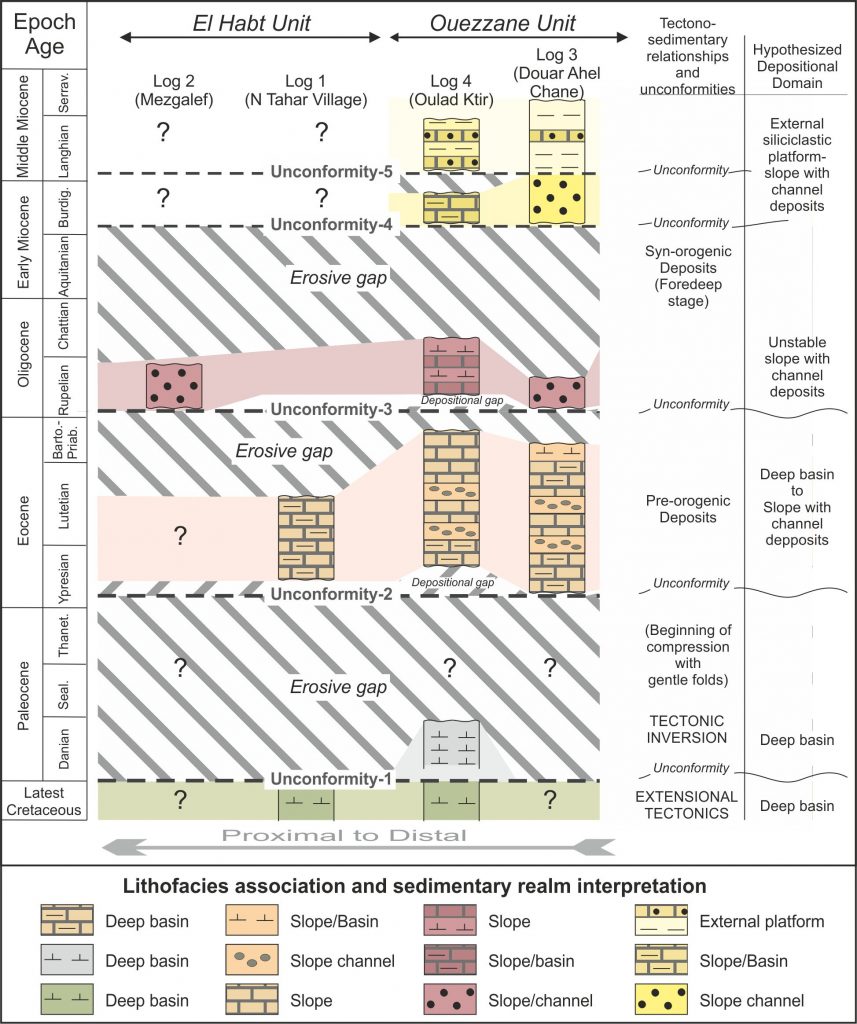
The presence of five unconformities allowed to define the main stratigraphic units arranged in a regressive trend: (1) lower Paleocene interval (Danian p.p.) assigned to a deep basin; (2) Eocene interval (lower Ypresian-lower Bartonian p.p.) from a deep basin to an external carbonate-siliceous platform; (3) lower Rupelian-upper Chattian p.p. interval deposited on unstable slope with turbidite channels passing upward to an external siliciclastic platform; (4) Burdigalian p.p. interval from a slope; (5) Langhian-Serravallian p.p. interval from slope to external platform realms. The petrography of the arenites and calcarenites allowed to identify supplies derived from erosion of a recycled orogen (transitional and quartzose sub-types).
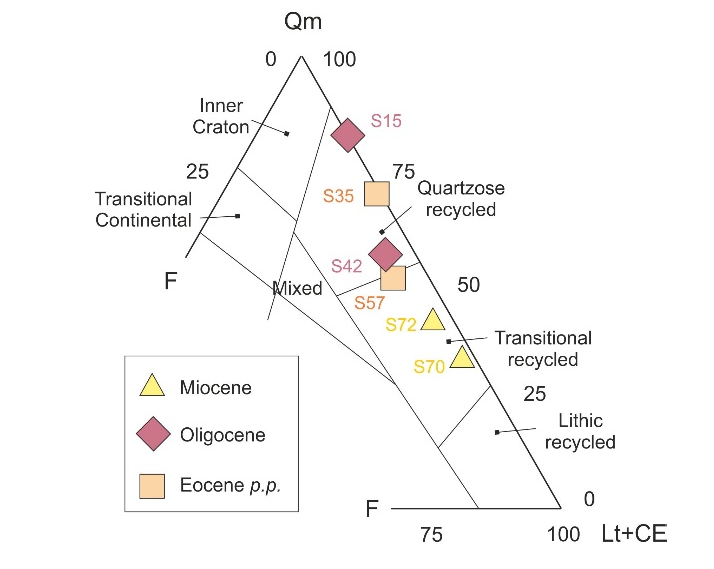
The clay-mineralogy analysis indicates an unroofing (first erosion of Cretaceous terrains followed by upper Jurassic rocks) always accomplished by erosion of Cenozoic terrains. Several tectofacies checked in some stratigraphic intervals seems to indicate the beginning of deformation of the basement generating gentle folds and first activation of blind thrusts, mainly during the Paleogene. A pre-orogenic tectonic framework is considered as risponse to the generalized tectonic inversion (from extension to compression) as frequently registered in the central-western peri-Mediterranean areas. The large volumes of reworked terrigeneous supply during the latest Oligocene-Miocene p.p. indicates the beginnigs of the syn-orogenic sedimentation (foredeep stage of the basins) controlled by active tectonics.
Sedimentary History and Palaeogeography of the Cenozoic clastic wedges of the Malaguide Complex, Internal Betic Cordillera, Southern Spain
The Cenozoic sedimentary cover of the Malaguide Complex (Internal Betic Cordillera, Spain), in the Almería and Málaga areas, consists of a suite of sedimentary successions from continental and shallow-marine to deep-marine environments. Structural and stratigraphic relations, and petrological and geochemical signatures reveal the sedimentary evolution of the Cenozoic Malaguide Complex (CMC) from pre-orogenic (Palocene-Eocene) to syn-orogenic (Oligocene-Early Miocene) stages.

Sandstones detrital modes of the overall succession are heterogeneous testifying to a multi-source area, marked by exhumation of the Malaguide basement terranes and of the Internal Betic Zone (Alpujárride Complex) in lower position. Pre-orogenic and syn-orogenic strata consist of four main depositional sequences: the Mula Group (Paleocene), the Xiquena Group (Eocene) for the preorogenic successions; and Ciudad Granada Group (Oligocene-Aquitanian) and Viñuela Group (Burdigalian) for the synorogenic successions. Pre-orogenic strata evolve from intra-arenite to hybrid arenites to progressive increase of sandstones in abundance of detrital supply from sedimentary cover of the internal Betic units. The unroofing history of the internal Betic Units, predominantly in the Malaguide Complex, is clearly testified in strata of the synorogenic clastic units, where detrital supply is coming from the Malaguide Complex. Sedimentary lithic fragments were derived from the Mesozoic strata of the Malaguide Complex while metamorphic detritus is related to the Internal Betic Zone basement that was exhumed starting from the Oligocene. Pre-orogenic mudrocks mainly show abundance of calcite and dolomite over quartz and phyllosilicates. Syn-orogenic mudrocks, record an abrupt decrease in calcite and dolomite and an increase of phyllosilicate, quartz and feldspars mainly in the Malaga section. The geochemical signatures attest to a compositional variation of the samples from pre-to-synorogenic successions, with palaeoweathering indices showing moderate values and a weak up-section decrease. The Cenozoic Malaguide Complex played a key role in the geodynamic evolution of the Betic Cordillera, representing the key tectonic element of the western Mesomediterranean domains.

Cite as: Critelli, S., Martín-Martín, M., Capobianco, W., Perri, F., 2021. Sedimentary history and palaeogeography of the Cenozoic clastic wedges of the Malaguide Complex, Internal Betic Cordillera, southern Spain. Mar. Pet. Geol. 124, 104775. https://doi.org/https://doi.org/10.1016/j.marpetgeo.2020.104775
Visiting the Monduver geologic dome
Students of the third course of Geology of the Alicante University within the subject of Regional Geology: visit Jarafuel triassic section, Montealegre del Castillo triassic section, Sot de Chera Jurassic section, Valencia Albufera, and Monduver geologic dome.
The dome was investigated during the 70s as was drilled by the Jaraco borehole.
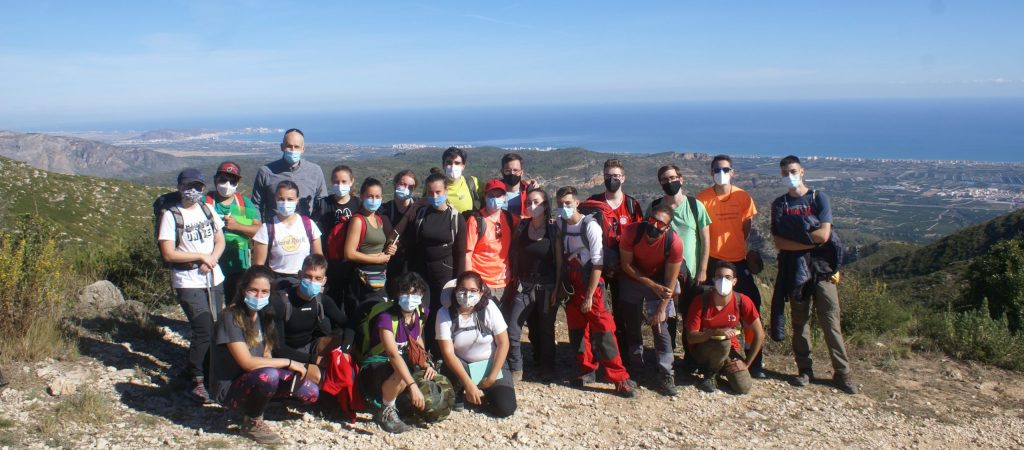
Mula field work
Students of the third course of Geology of the Alicante University within the subject of Mapping 2: visit North of Mula village. Working in the Malaguide complex non-metamorphic rocks.
The visit took place from October 21th until 24th of 2020 and the professor in charge was Manuel Martín-Martín.
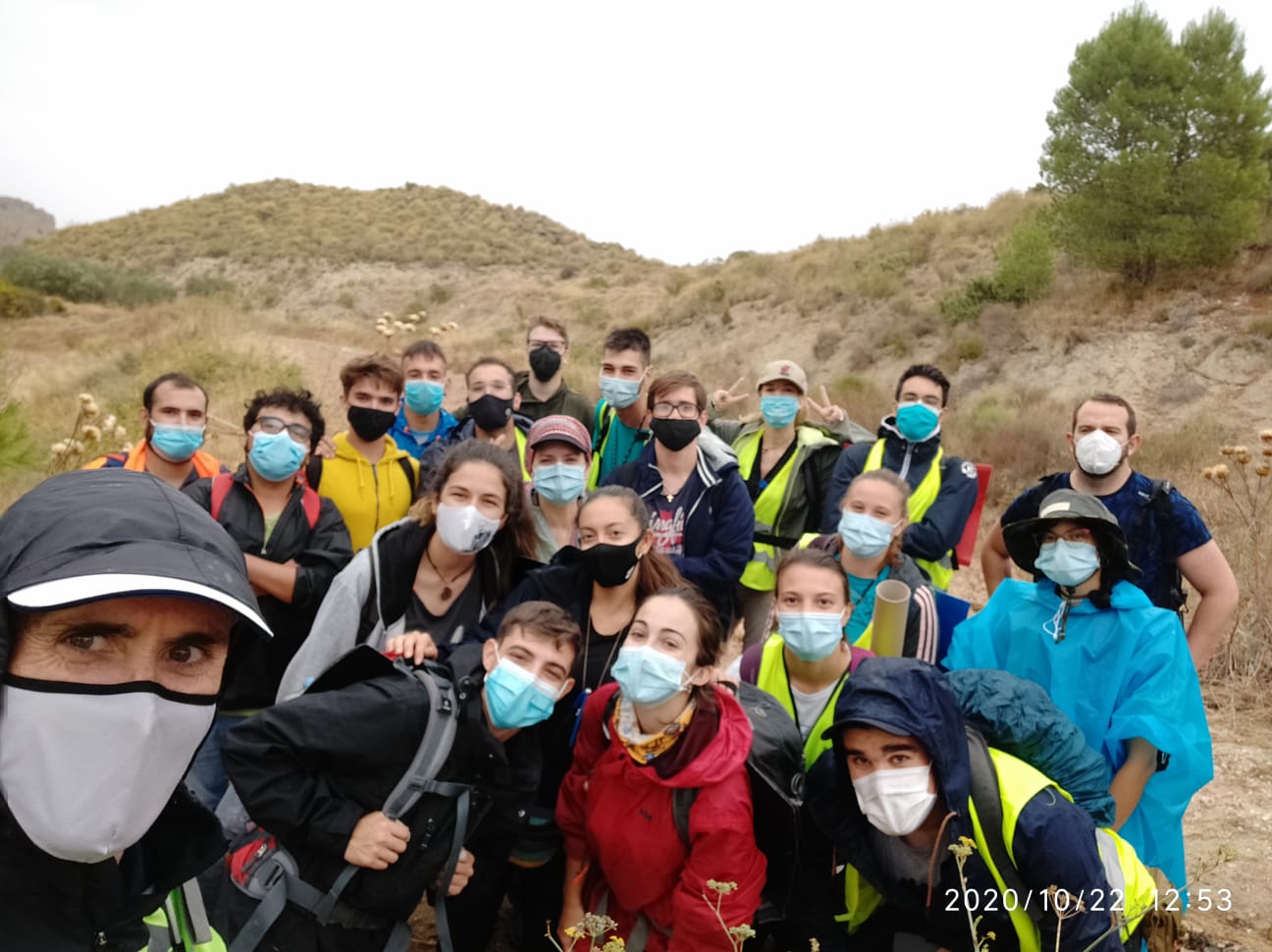
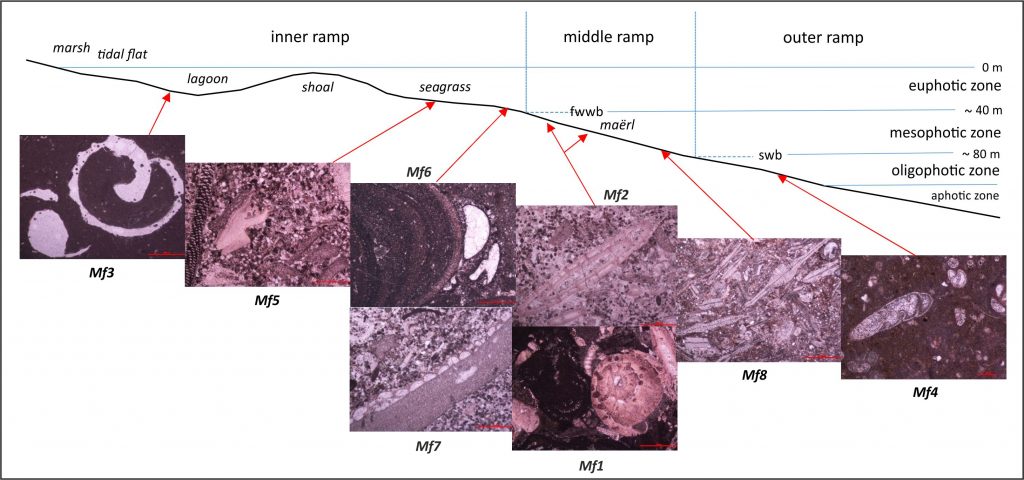

Recent Comments